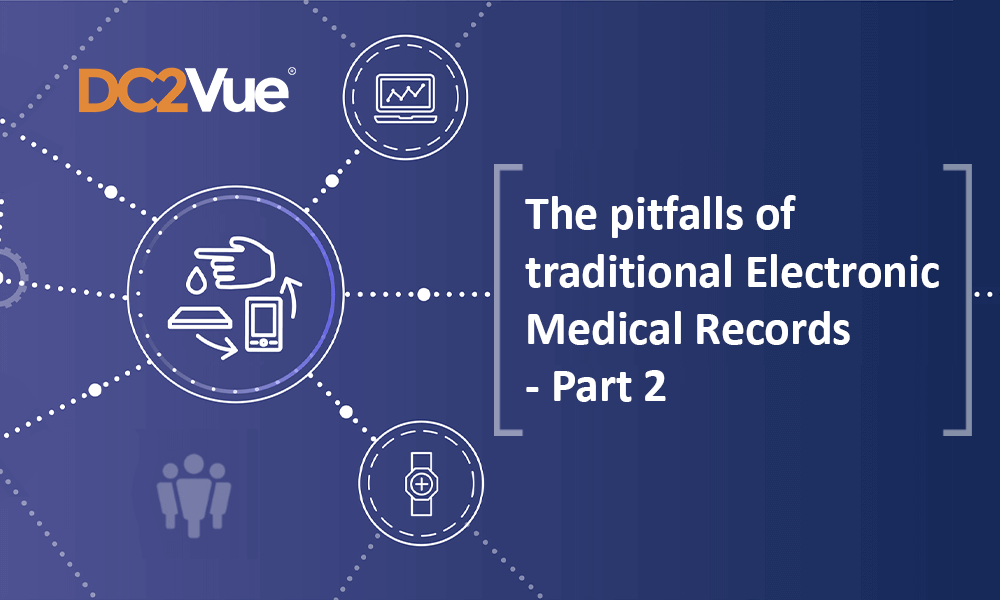Physicians and other health care professionals are highly critical of traditional EMR systems due to the many challenges it poses in care coordination, workflow, and care management. Doctors are constantly on the go and always on the look for streamlining their workflows to maximize efficiency. Errors, glitches, and freezes cannot be afforded in the health care industry, which can waste valuable time — in the worst-case scenario impact a patient negatively.
Many find EMR systems complicated, dysfunctional, and less user-friendly, while many EMR solutions appear to have been built with little to no coordination with physicians, the software’s users. Hence it fails to respond to the extremely particular demands of the users. The programs may have all the functionality that was requested when the development was commissioned, but they are hidden deep within the drop-down menus where they will never be found or making not practical for daily use.
The abundance of Unstructured data
As mentioned in part one of this article, EMRs provide a centralised location to store all medical records electronically. However, it offers more unstructured data than structured data, creating several challenges for health care professionals, including:
Challenges in storing and managing due to lack of schema and structure
Difficulties in indexing the data
Less accuracy in search results and data
Challenges in data security to data
In simple words, unstructured data is data that does not conform to a data model and has no recognised structure, making it difficult for a computer program to use. Since this type of data is difficult to manage in an Electronic Medical Record or other hospital information systems, this information is frequently neglected, unsaved, or abandoned at most medical centres for a long period of time.
From endoscope, laparoscope, surgery robot, capsule endoscope, emergency video camera, thoracoscope report videos to bio-signals, all fall into the unstructured category, which can give you a pretty good idea of the data physicians miss out in the process that can make a significant impact in the outcomes in patient care.
Although EMRs have capabilities to store and organise data and records, immediate improvements are required to optimise the accuracy and value of data and its usability. Combining digital care coordination with an EMR can be a great approach here to coordinate medical data to turn them into useful medical insights on treatment plans. Digital care coordination can play a key role in bridging the gap between the limitations of traditional EMRs and the requirements of providers for value-based care in the health care sector. Moreover, the technology can help hospitals shift from reactive care to proactive care coordinating data appropriately for tailored care and communications to meet individual patient requirements. This also improves health care professionals’ ability to improve the patient experience by accessing data the right ways, at the right times.
Discontinuity of community care
The traditional EMR system poses many operational challenges for frontline public health workers. Community care workers are trusted advocates for underserved individuals and local communities to receive information and assistance in receiving eligible health care services and programs, and other treatments. Thus, their job requires effective data exchange between many stakeholders of different programs and policies while submitting their records to relevant parties.
However, the current system has limited functionality where they can only use the system to access primary care records, with no interoperability with other hospitals, even with ones only a few minutes away. Thus, sharing information is often performed via fax, screenshot, or managed over the phone.
On the other hand, many community workers find delays in exchanging documentation and often experienced many mismatches between meaningful-use criteria and what they considered to be the most important elements of community care coordination. However, it’s obvious that all these challenges can be successfully tracked by incorporating digital care coordination with EMRs.
Benefits of moving away from traditional EMRs
Many physicians and health care professionals are clearly not happy with the outcomes they’ve acquired with traditional EMRs after implementation. But the good news is there is still hope with digital care coordination solutions.
First, let’s look at the benefits of moving away from traditional EMRs:
Reduced readmissions
Clinician happiness
Operational efficiencies
Reduced cost
Embracing digital care coordination is the best alternative for health care provider. The technology is the ultimate solution that can streamline workflows and optimise data coordination and improved patient outcomes and simplify health care professionals’ lives at the same time. Get in touch with us today to learn more about Digital Care Coordination solutions from our experts.



